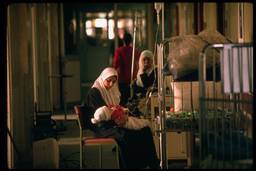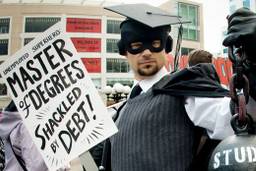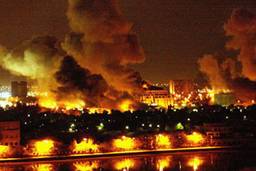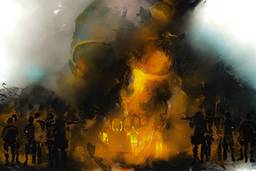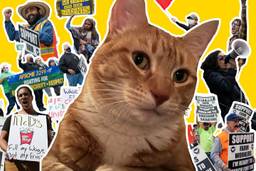Katrina: After the Storm
Historian Karen Sawislak talks about what’s old in New Orleans
Christopher Hayes
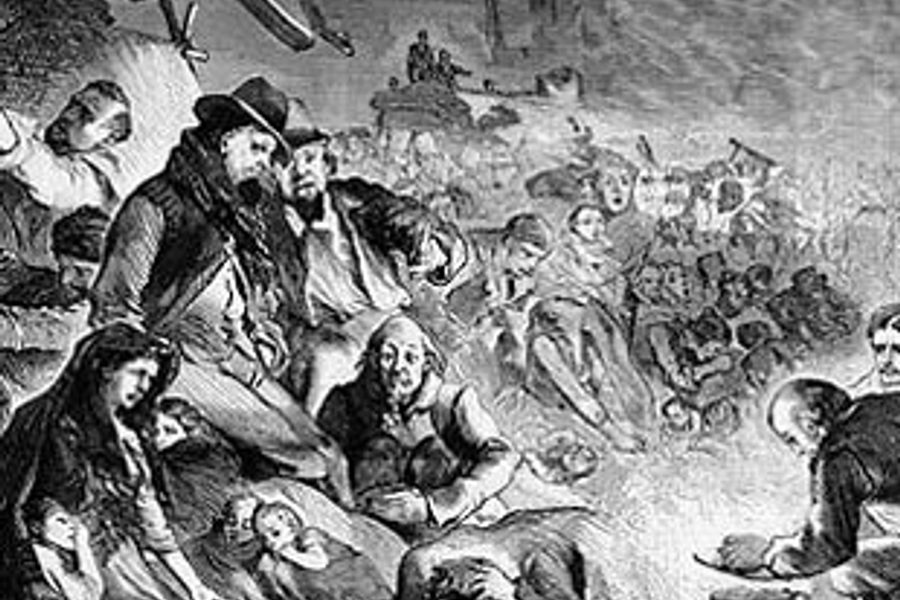
When New Orleans Mayor Ray Nagin assured the city’s black residents that New Orleans would remain a “chocolate city,” he was roundly ridiculed by everyone from late-night talk show hosts to local politicians. But clumsy as the rhetoric might have been, it’s hard not to sympathize with the excruciatingly difficult balancing act he’s now trying to pull off: The city can’t rebuild without residents, but residents don’t want to move back until it’s at least partially rebuilt. With an amputated polity, New Orleanians now face a daunting project: figuring out an efficient, yet just, approach to rebuilding a city that was the site of terrible inefficiency and injustice before the flood.
But as catastrophic as Katrina was, it isn’t the first time a major American city has faced these kinds of questions: The much mythologized Chicago Fire of 1871, which destroyed the entirety of the city’s downtown and left about 100,000 homeless, also set off heated debate about how to rebuild. The social tensions and conflicts that came to a head in the fire’s wake are particularly salient today. In order to get some historical perspective, In These Times spoke with author Karen Sawislak, whose 1995 book, Smoldering City: Chicagoans and the Great Fire 1871-1874, recounts how Chicagoans grappled with some of the same challenges now facing the residents of New Orleans.
One of the most interesting things in the book is the disproportionate effect of the fire along class lines.
Yes. It’s a pretty exact parallel in terms of the poor, low-lying neighborhoods in New Orleans. In Chicago in the 1870s, slums and poor neighborhoods were poorly regulated in terms of construction and sanitation and didn’t have the kind of infrastructure you’d expect in a modern city. Fire codes were very lax or non-existent. Fire protection services were privately financed through neighborhood taxation, which left poor neighborhoods unprotected. Workers and the poor weren’t property owners, so there was no incentive to make improvements. So when the fire came to those neighborhoods, it happened very fast and there was nowhere to go. People in wealthier neighborhoods had access to better roads, or could hire people to help them or had their own means of transportation.
The most striking historical parallel for me was the way these lurid tales of looting and depravity by the city’s hordes circulated through the press. But once the fire had died down, and the panic was gone, it became clear that almost all of it was false: People had actually behaved incredibly civilly to each other. How is it that 140 years later, with a press corps with helicopters and cameras, we’re still making the same mistakes?
It gets to some of the essential issues about cities. One of the key characteristics of urban life is that you have a place with a mixing of people – different classes, different races. In a disaster you have a breakdown of the barriers that usually exist and a loss of control. I think these fears of the urban underclass are always present, but they’re usually managed by the ordinary structures of residential segregation and policing and the like. In a disaster, these things go out the window and those fears surface immediately. The kinds of narratives that are told and are ultimately debunked – it happened in Chicago and again in New Orleans – reveal the constant deep bias that people of means feel toward the urban underclass.
It seems that the approach to relief grew out of the dominant ideology of the time of a kind of laissez-faire, up-by-your-bootstraps fetishization of the individual economic actor – which is, of course, pretty similar to what we have now.
Yeah, it’s the root of everything. One of the key points in my book is that it’s critical to understand how this ideology affected people’s perception of class difference and what the role of government should be.
In terms of relief, there was great concern to make sure people got no more than they had before the fire. It was less about charity in the broad humanistic sense and more about controlled social reconstruction in the Republican, current-day, mean-spirited sense. There was a deep hostility towards any sort of “handout” or uncontrolled government largesse that would corrode an individual’s ability to fend for himself.
When different groups made efforts to help with the relief by offering food, transport and the like, it proved very troubling for the business elite in Chicago. So the Chicago Relief and Aid Society essentially took over the relief process. Basically, the board of directors of the Society, which was a “Who’s Who” of Chicago’s major business leaders, told the city’s politicians: “We need to take control to prevent the danger of dependency.” They advocated a philosophy of “scientific charity,” which was just then becoming popular.
They proceeded to do things like shutting down a soup kitchen established by the city of Cincinnati, because the idea that you could go to a facility if you were hungry and get a bowl of soup didn’t square with “scientific charity.” Instead, they set up a bureaucracy that differed depending on the targeted clientele. There was “basic relief” for workers and immigrants. It required filling out forms, providing a character witness, and going through an interview process before you could even get emergency cash assistance. Then there was something called “special relief,” which was targeted toward middle class and business people. These folks could get straight-up cash grants to restart businesses. They were not required to have the same kind of character checks or witnesses, because the Society felt it would be too embarrassing for them.
There was this hilarious sort of inversion. By seeking relief, you demonstrated that you were unworthy of it. Whereas if you didn’t seek relief, it showed you were so proud…
… that you were worthy. The fact that you were willing to stand in a long line showed that you were suspect on some level.
After the relief effort petered out, how did Chicago get rebuilt? Who paid for it?
It was pretty much a private deal at this point. Investors were able to see an opportunity there, particularly in a more defined downtown commercial district. This is probably the biggest difference between what Chicago faced in rebuilding and New Orleans is facing: Chicago was an incredible boom town at this point in time. It hadn’t gotten to its fastest point of growth, which happened in the 1880s and ’90s, but it was growing hugely fast and was becoming the key commercial nexus of the whole country. I think it was clear to investors in the East and in Europe that the city would rebuild. Although there was spectacular destruction and a lot of famous commercial buildings were destroyed, a lot of the most important places, from an economic standpoint, weren’t touched: the stockyards, the lumberyards, the shipping facilities, the train depots, etc.
So the market forces, in terms of investment opportunity, were very positive. And whatever initial exodus there was was easily replaced with the labor influx coming in to rebuild. I tried very hard in this book to de-mythologize the fire and what it means in the city’s history by looking at how it really showed the divisions and differences in the city, but I did come away impressed, I have to say, by how quickly things got going again.
Now contrast that to New Orleans. Even prior to Katrina, it was becoming depopulated. In recent years it was, as far as I understand, built on a tourist economy and there were lots and lots of poor people without opportunity. This makes it a completely different scenario in terms of the market incentive to fund rebuilding. It is not at all the same as Chicago in the 1870s.
What do you see as the chief lessons from the rebuilding after the Chicago fire?
For me, when looking at the great fire, the ultimate question is: What are communities’ or governments’ or even an entire nation’s responsibilities to less-advantaged citizens when they are facing this kind of utter destruction of the world that they’ve known. I think you can see from the book, that some of the same kind of knee-jerk responses of “Well, we can’t help too much,” or that people are where they deserve to be, is a huge part of our political culture and our history.
In New Orleans right now, you have many experts who say the lower Ninth Ward and other low-lying areas shouldn’t be rebuilt because they’re just going to get flooded again. But these are the neighborhoods that poor people lived in and feel they have a right to return to. The issues here are strikingly similar to the controversy about whether Chicago was going to allow wood as a building material after the fire.
Yeah, there was a post-fire analysis to see what could be done to make sure this doesn’t happen again – much as the people reconstructing New Orleans are thinking about how to prevent future flooding. The proposed solution was citywide fire limit. Fire limits were an early form of zoning. Cities would say that within certain boundaries you can only build with fireproof materials, brick or stone at the time, and they outlawed other materials, like tar for roofs that are flammable but were cheaper.
After the fire, a new mayor came in, Joseph Medill, who was a classic 19th century Republican reformer devoted to the notion of the broader public good. His platform was a citywide fire limit, which was very troubling for people of lesser means who had just been whacked by the fire itself. You had a lot of Germans and Scandinavians, in particular on the North side, whose neighborhoods were devastated. They were now being told they had to use fireproof materials, not wood, to rebuild, which made it prohibitively expensive for working-class homeowners. So it touched off a political battle.
One of the things that struck me in the book is the degree of social capital these immigrant communities had prior to the fire in terms of ethnic associations or newspapers and such, and it allowed them to do relatively well after the fire in these battles over policies.
At the time local communities, especially the German-American politicians, were able to mobilize quite effectively in their own neighborhoods to defeat the notion of fire limits. It was portrayed as elitist, which in many ways it was, and this was a huge defeat for Joseph Medill. And there is an argument that this was an example of democracy working. You have these ward-based politicians who were able to represent the interests of their particular neighborhood and defeat a citywide policy.
So if there’s a hopeful lesson to draw, it’s that there is an opportunity to organize locally and make a case for having your home back.
